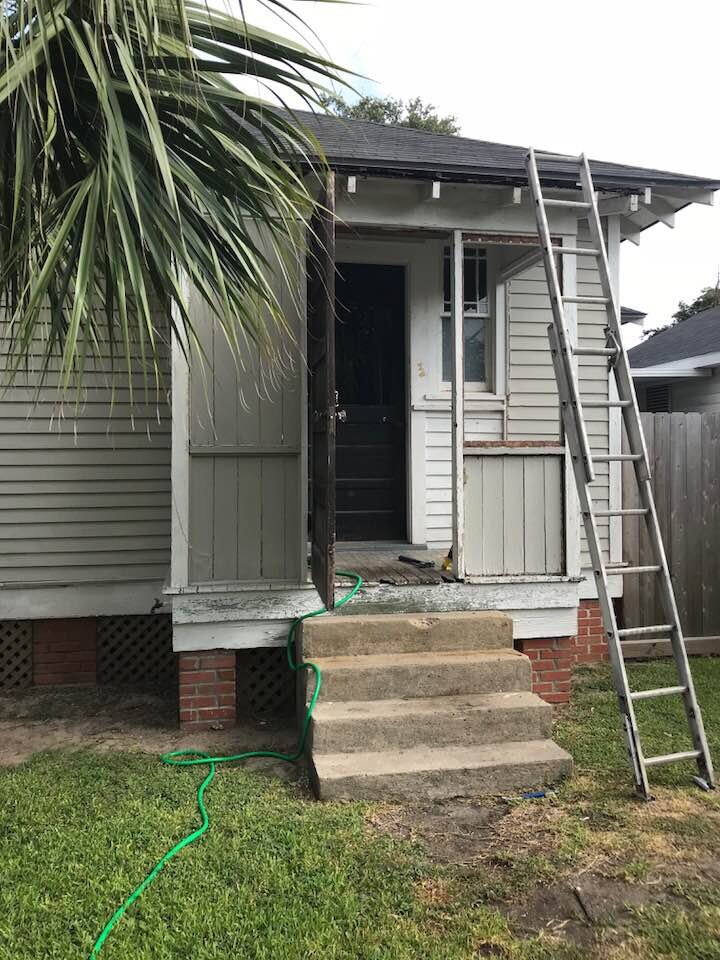Island Oktoberfest
This morning, I drove over to the First Lutheran Church of Galveston to attend the 37th Annual Galveston Island Oktoberfest. Though this event is considered the premier fall festival on the island, I had never been to it and, to be honest I didn’t know much about it.
Fortunately, a few days ago, a good friend enlightened me. She told me all about the big event and added, “You must go; you’ll love it!”
This friend, a BOI (Born On Island), knows exactly what’s what in Galveston as well as anyone I know.
So, I took her advice; put on the closest thing I had to German garb, and headed out.- expecting to have a fun and festive afternoon. And, I did!
Approaching the entrance to Oktoberfest, I heard the brassy sounds of German folk music and was greeted by a cadre of festival faithfuls, all were dressed as if they had just flown in from Bavaria. The men wore brown lirederhosen, with shoulder straps, buttons embellishing the front and tan trimmings. Underneath, they all had on off-white shirts with lace up collars, matching brown and tan hats and, of course, white knee socks.
The women strolling about wore Alpine Dirndl (blue, green or black ones mostly) with edelweiss, enzian and almrausch floral embroidery. On top, all wore neat and tidy embroidered white aprons. Many - no matter their age - wore their hair in pretty braids.
Needless to say, the authentic German music and the costumes set the stage perfectly, and I eagerly moved forward, eager to participate in these annual festivities.
Inside the gates, on the grounds of the church, a couple of hundred others had already assembled - all were either manning or patronizing dozens of booths featuring German food and beverages, as well as several play stations for kids. Like everyone else, I strolled around to see everything, stopped often to say “hi” to friends I bumped into and enjoy, like them, a sampling of the tasty bites, including Bratwurst, a personal favorite.
After an hour or so, I started looking for the arts and crafts booth. I soon discovered the artisans had set up their pop-up shops inside the Lyceum Chapel, an elegant, mid-19th century Victorian structure situated right next the church. Walking into The Lyceum, I was taken aback by the beauty of the building and by the fact that I wasn’t even aware of its existence!
Soon, I learned from another BOI that The Lyceum underwent extensive renovation and restoration about a decade ago, with work completed in the summer of 2009, Now, The Lyceum is one of the Island’s premier venue for weddings, receptions, meetings and other special events.
-
2022
- Mar 17, 2022 Ivy Dishes
- Jan 29, 2022 Grace Episcopal Church
- Jan 1, 2022 100 Years
-
2021
- Aug 25, 2021 My Fig Tree
- Apr 28, 2021 Darlene's Shrimp
- Apr 24, 2021 Oleander Festival
- Feb 27, 2021 Great Winter Storm
- Feb 10, 2021 The Mourning Wave
-
2020
- Oct 26, 2020 Crepe Myrtles
- Sep 18, 2020 Trimming the Palms
- Jul 19, 2020 The Dancers
- Jul 11, 2020 Postcards
- Jun 20, 2020 Resilience Flag
- Jun 19, 2020 Juneteenth
- Jun 10, 2020 Silk Stocking
- May 27, 2020 Tree Sculptures
- May 6, 2020 Babe's Beach
- Apr 22, 2020 Opera House
- Mar 2, 2020 Texas Heroes Monument
- Feb 15, 2020 Mardi Gras Parade
- Jan 19, 2020 St. Joseph's Church
-
2019
- Dec 15, 2019 Celebrations
- Nov 6, 2019 Fresh Paint
- Oct 21, 2019 Jazz Age Series
- Oct 20, 2019 ARToberFEST
- Oct 6, 2019 Stingeree
- Oct 5, 2019 Pumpkin Time
- Oct 2, 2019 Sea Turtles
- Sep 29, 2019 Powhatan House
- Sep 24, 2019 The Dolphins
- Sep 5, 2019 Lucas Apartments
- Aug 24, 2019 Sandcastles
- Aug 9, 2019 The Daily News
- Jul 18, 2019 Beach Walk
- Jul 10, 2019 La King's
- May 25, 2019 Pleasure Pier
- May 1, 2019 Bolivar Ferry
- Mar 15, 2019 Saengerfest Park
- Jan 19, 2019 Moody Mansion
-
2018
- Dec 18, 2018 The Vintage Suitcase
- Dec 17, 2018 Festival of Lights
- Dec 2, 2018 Sunday Brunch
- Nov 21, 2018 Hendley Row
- Oct 27, 2018 Island Oktoberfest
- Sep 20, 2018 The Strand Clock
- Sep 16, 2018 St. Mary Cathedral
- Aug 11, 2018 No More Shed
- Jun 10, 2018 Rosenberg Library
- May 7, 2018 Stepping It Up
- May 3, 2018 A Happy Hour
- May 1, 2018 Ashton Villa
- Apr 21, 2018 96th Birthday
- Apr 1, 2018 Seawolf Park
- Mar 27, 2018 Ball High School
- Mar 15, 2018 East End
- Feb 1, 2018 Tremont House
- Jan 26, 2018 Menardi Gras
- Jan 24, 2018 Mardi Gras Decor
-
2017
- Dec 1, 2017 Miss Ruby
- Oct 8, 2017 Railroad Museum
- Oct 7, 2017 Tall Ship Elissa
- Sep 9, 2017 Star Drug Store
- Sep 8, 2017 1900 Storm Statue
- Aug 6, 2017 The Turquoise Table
- Aug 1, 2017 Bishop's Palace
- Jul 23, 2017 Garten-Verein
- Jul 21, 2017 Yard Work
- Jul 16, 2017 The Strand
- Jun 17, 2017 Stewart Beach
- Jun 7, 2017 The Original
- Jun 3, 2017 Murdochs
- May 27, 2017 Bryan Museum
- May 19, 2017 Firemen on Call
- May 13, 2017 Williams-Borden Neighborhood
- May 1, 2017 Oleander City
- Apr 28, 2017 God Winks











